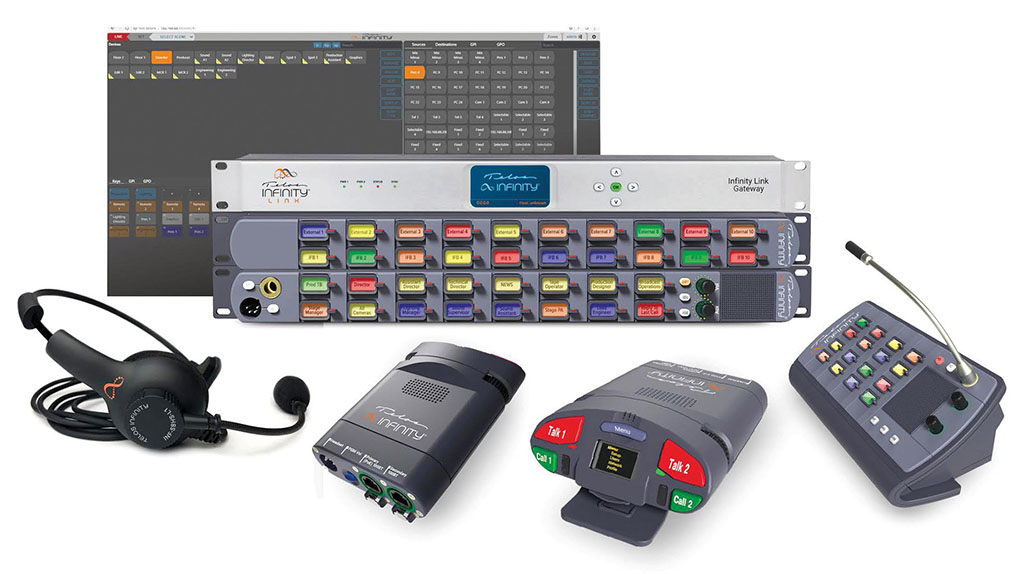Today’s Audio Goes Virtual, Immersive
New standards, deployments bring new opportunities

This story was originally published in TVT's March print issue, previewing the 2020 NAB Show. As of March 11, the NAB Show has been postponed indefinitely.
For the past several years, TV broadcast audio equipment manufacturers have been responding to their customers’ needs for IP networking and issues of interoperability, the implementation of immersive audio functionality and, increasingly, virtualized workflows. What is the current state of play with regard to these three hot topics?
VIRTUAL PRODUCTION ENABLED BY IP
The adoption of IP networking is helping to reduce costs, not least in the elimination of remote trucks and crews on certain productions, together with the more efficient use of plant equipment.
“Virtual production products can help broadcasters streamline workflows, reduce downtime on consoles, improve cost efficiency and expand the variety of coverage, plus integrate with other equipment via open source transport mechanisms,” says Dave Letson, vice president of sales for Calrec Audio.
The company’s 2U RP1 remote unit enables and supports REMI workflows. “Calrec’s Type R can provide station automation on an IP network, while the company’s VP2 operates on Calrec’s Hydra2 backbone,” adds Letson. They too introduce workflow efficiencies and reduce costs. “Both products enable stations to reap many of the benefits of using a Calrec console, but without a physical control surface.”
Audio over IP was the foundation for Infinity, Telos’ intercom platform, according to Martin Dyster, project director for Telos Infinity. System designers can leverage the combined advantage of Infinity AoIP and Infinity Link VoIP transport to bring together disparate audio components into a seamless system.
“The AoIP network connectivity between Infinity and the production audio system is native and doesn’t rely on dedicated interfaces or bespoke edge devices,” Dyster said. “[Infinity] enables the user to take full advantage of its hybrid WAN/LAN connectivity to combine both local and remote subsystems seamlessly into one larger integrated system.”
The professional video industry's #1 source for news, trends and product and tech information. Sign up below.
CHALLENGES ABOUND

Yet there are still some challenges with IP networking and its implementation.
“It would be nice to say that all IP streams are the same, but they’re not,” says Wheatstone Senior Sales Engineer Phil Owens, noting that sample rates and packet times may vary. To better facilitate interoperability, he says, “Wheatstone is designing our next generation Blades [I/O devices] with this in mind, allowing for compensation for various streams/flows/essences in the most flexible way possible.”
Where some of the IP standards fall short, says Shawn Anderson, product manager at intercom manufacturer RTS, is that they focus on audio transport, not control. “One of the things that we helped spearhead was the AES70 Open Control Standard, to try and give some people at least a pathway to have unified control across different systems,” he says. But individual manufacturers can offer far more control of their own products with their native protocols, he observes.
“We’ve still got a way to go before manufacturers’ implementations and customer expectations are in alignment,” agrees Dyster. “NMOS is meant to be the panacea, but adoption by manufacturers has been slow, and interpretations of the standard can vary between manufacturers.”
Letson believes the biggest issue facing broadcasters is how and when to transition to an IP environment. “Most broadcasters will continue to leverage their major financial investments in proprietary systems for some time,” he says.
New Calrec products bridge the company’s proprietary Hydra2 and standard networks. “These initiatives enable broadcasters to choose the pace at which they switch over to IP technologies,” says Letson. Those products alternatively enable customers with greenfield developments to dive straight into an IP environment, he adds.
GOING IMMERSIVE
Immersive audio capabilities have been incorporated into TV broadcast standards worldwide—the question now is what manufacturers are doing to enable their customers to create immersive content and when such content might be more widely available to consumers.
“I don’t think you’ll be seeing immersive audio in your six o’clock news anytime soon,” predicts Owens. For console manufacturers, he says, immersive audio requires two things—more console bus outputs and the ability to pan in 3D with the addition of a z or height axis in the panning algorithms.
Another transition that could spur demand for immersive content is deployment of the NextGen TV standard as well as adoption of the SMPTE 2110 video transport over IP protocol, according to Larry Schindel, senior product manager for Linear Acoustic, a part of Telos TV Solutions Group.
“Broadcasters have committed to launching ATSC 3.0 services in 60 markets across the U.S. during 2020, and this includes the top 40 markets,” Schindel said. But immersive audio will largely be married with 4K video signals, he says, so video requirements will also need to be considered in tandem with the additional channels and processing to support immersive audio.
“It will be interesting to watch how quickly SMPTE ST 2110 adoption will take hold on a wide basis, and if new 4K/immersive buildouts will rely on SMPTE ST 2110 infrastructure or if they stay with SDI,” he added.
MONITORING IT ALL
The management of metadata will also become critical for both immersive and personalized experiences, Schindel says. And since consumers will be listening in a variety of audio formats, not just immersive, operators must be able to monitor all of them.
“With even more audio to monitor, it is important that we make life as easy as possible for operators,” agrees Mark Davies, director of products & technology for TSL. That will likely include the presentation of clear and concise displays to confirm everything is in the right place and legal at the point of monitoring, and allowing rapid fault finding when things do go wrong, he says.
Calrec is ready for that immersive future now, reports Letson. The company’s new ImPulse Core processing engine was designed to incorporate 3D immersive path widths and panning for multiple next-gen audio applications and input channels. “Height and 3D pan controls are provided, and paths of all widths can co-exist within a mix and be routed to/from each other with flexible panning and downmixing built in,” he says.
TEN YEARS HENCE

Now that we’re in a new decade, what do manufacturers think customers might expect to see at the 2030 NAB Show?
“Everything is moving towards more software-based systems,” says Anderson, and to cloud-based services and virtualization. That is being driven in part by consumers’ experiences with their smart devices and services such as FaceTime. “Their expectations are to see the same capabilities from their intercoms or their video content management systems.”
Davies concurs: “Audio processing engines will most likely be SaaS [Software-as-a-Service] running in the cloud. The only physical presence will be the control surface.”
“The rise of IP and remote production will naturally lead to fully virtualized workflows becoming more prevalent,” agrees Letson. “DSP resources will be centralized and allocated to productions as and when they are required, so a production hub can cover any event anywhere by tapping into centralized resources via IP networks. This will provide more efficient workflows allowing resources to be apportioned depending on the size of the production.”
But Dyster cautions, “I feel the real world moves slower than we would like to think. Undoubtedly a major driver will be the lower cost and availability of ultrahigh-speed data networks, the precursor being the roll-out of 5G,” he said. “But the real fun here is figuring out what our user interfaces will look like and how people might use our products differently. I can foresee hands-free production becoming the norm rather than the exception.”
But whatever broadcast workflows look like in 10 years, says Dyster, “It’s likely to mean greater simplicity, seamless integration with our ‘domestic’ communications devices, such as phones and computers, and minimal reliance on the hardware panels we use today.”
Steve Harvey began writing for Pro Sound News and Surround Professional in 2000 and is currently senior content producer for Mix and a contributor to TV Tech. He has worked in the pro audio industry—as a touring musician, in live production, installed sound, and equipment sales and marketing—since November 1980.
